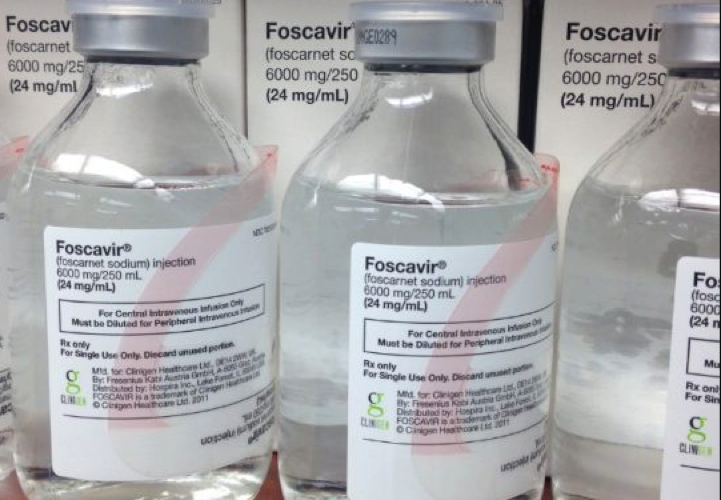A Japanese trial of foscarnet prophylaxis in cord blood transplant patients was successful in reducing severity of symptoms and mortality as well as suppressing high viral loads, but it failed to prevent encephalitis. The authors note that inflammation of the blood brain barrier aids in effective penetration of the drug into the central nervous system and speculate that the low degree of meningeal inflammation in their cohort combined with the given dose of foscarnet may have resulted in inadequate levels of the drug reaching the CNS.
A total of 57 patients were treated with foscarnet (90mg/kg) for 21 days after cord blood transplantation. Surprisingly, 7 (12.4%) patients developed encephalitis. However, the symptoms were mild, none of the patients died, and only one had permanent sequelae. Foscarnet was also very effective at preventing high level reactivation with only 18.3% developing high viral loads compared to 57.3% in a group of historical controls. A higher dose of foscarnet (180mg/kg) was administered to patients who developed encephalitis, with good results, leading the team to suggest a higher prophylactic dose in future studies, especially in patients who receive corticosteroids for inflammatory conditions and graft versus host disease.
Of interest, 6 of the 7 patients who developed encephalitis during or after prophylaxis had been treated with steroids to control inflammatory conditions. Steroid administration is a known risk factor for HHV-6 encephalitis (Ogata 2017).
HHV-6 encephalitis has a high mortality rate and most survivors — 57% of 121 encephalitis patients evaluated in a recent study — suffer from neurological sequelae (Ogata 2017).
The authors note that past studies have shown that cerebrospinal fluid (CSF) foscarnet levels correlate with meningeal inflammation and the quantity of cells present in the CSF (Raffi 1993).
Another surprise was that there was no reduction in the rate of acute graft versus host disease (aGVHD) compared to historical controls. HHV-6 reactivation has been associated with an increased risk of aGVHD, but it is unclear whether HHV-6 is a bystander or plays a causative role.
One limitation of the study was the absence of a prospective control group, making it difficult to draw conclusions. For example, all historical control patients who had received antiviral treatment were excluded from the study, which might be expected to alter the outcome.
The authors plan to study higher doses of foscarnet for selected patients, and they propose future studies of new antivirals with good penetration of the central nervous system.
Read the full paper: Ogata 2018

